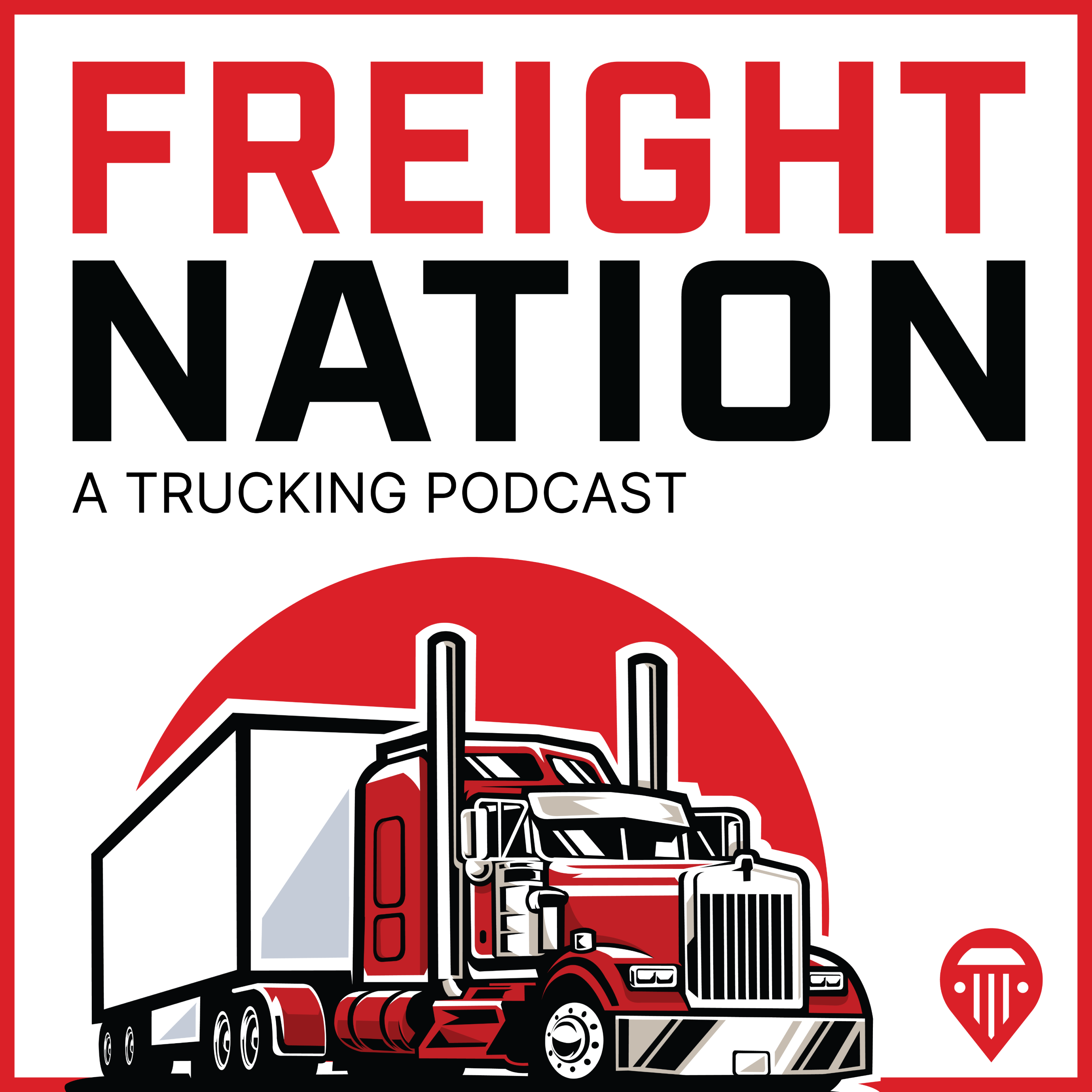
Logistics at a Crossroads
Where freight meets real life.
Hosted by Gia — logistics veteran, cancer survivor, and truth-teller — “Logistics at a Crossroads” explores the industry, identity, and the grit it takes to keep showing up. Freight. Feelings. No filter.
Logistics at a Crossroads
🎙️ Episode 24: The Uncertainty of Tariffs, Job Layoffs, and the Future of Restructuring in Logistics
In this episode of Logistics at a Crossroads, Gia explores the growing uncertainty in the logistics and global business landscape, driven by tariffs, economic restructuring, and corporate challenges. From job layoffs to companies pulling their financial guidance, we’re seeing how the shift from the pandemic-era economy is forcing businesses to rethink their strategies.
With a focus on recent disruptions caused by tariffs and the broader restructuring needed to adapt to these changes, Gia discusses how businesses can move forward with end-to-end transformations rather than merely cutting costs. This episode dives into the very real impact on logistics operations, highlighting the need for resilience, flexibility, and agility in the face of ongoing uncertainty.
🎧 New episodes every week.
Follow Logistics at a Crossroads on your favorite podcast platform.
📬 Want to connect?
Find me on LinkedIn: linkedin.com/in/reginahunter
Visit the blog: giakat.blogspot.com
🎶 [Intro music LoFi Chill– “
Gia (calm, reflective): Hey everyone, welcome back to Logistics at a Crossroads. I’m Gia, and today, we’re diving deep into the growing economic uncertainty that’s reshaping our industry. Tariffs. Layoffs. Business restructuring. What we’re seeing isn’t just market noise—it’s a structural shift.
Over the past few months, we’ve seen warning signs across sectors. Freight volumes are dropping. Warehouse backlogs are creeping up. Corporations are pulling back on guidance. Behind the headlines, there’s a clear pattern: volatility is the new normal.
So what does that mean for logistics leaders? For workers? For planners who depend on predictability to do their jobs? Today, we’re talking about what’s happening, why it matters, and how we can respond.
Gia (urgently reflective): We’re hearing about 20,000 job layoffs in a single quarter, higher loan loss reserves, and a wave of companies withdrawing financial guidance. From General Motors and American Airlines to Stellantis and beyond, major players are admitting they can’t see far enough ahead to make solid forecasts.
But let’s zoom out. Much of this is tied to the aftershocks of the pandemic-era economy. For years, businesses operated on stimulus-fueled growth. Easy money. Cheap loans. And for a while, it worked. But now, as central banks tighten monetary policy and inflation keeps climbing, that borrowed time is running out.
JPMorgan, for example, recently raised its loan loss reserves by 30% in anticipation of defaults. Amazon and Meta have gone through multiple waves of layoffs. These aren’t seasonal corrections. These are long-term, defensive moves.
We’re not just in a downturn. We’re in a slow-motion reset.
Gia (reflective, firm): One article that caught my attention recently was by Mahadeva Matt Mani. His core argument? This time, restructuring has to be End-to-End. Not just cutting a few costs here and there. Not trimming around the edges. This is a full-body transformation.
He points out that after COVID, many companies got comfortable. Growth was artificially boosted. Profit margins looked strong, but the fundamentals were weak. Now, those same businesses are facing the real cost of under-investing in systems, people, and flexibility.
So what does End-to-End restructuring actually mean? Picture a global logistics firm. It can’t just upgrade its warehouse tech and call it innovation. It has to renegotiate procurement contracts, streamline delivery routes, rethink leadership layers, and rebuild contingency planning.
It’s like renovating a house while living in it. Painful. Messy. But necessary.
Gia (urgent, yet hopeful): Now let’s talk about what this means for logistics.
As tariffs continue to shift the playing field, and corporate financials get shakier, logistics leaders are stuck trying to plan for an unpredictable future. When companies withdraw guidance, it creates massive uncertainty in freight forecasting, inventory planning, and workforce allocation.
Some warehouses in the Midwest are reporting 40% under-capacity. Meanwhile, coastal ports are once again clogged due to emergency reroutes driven by geopolitical tensions. It’s a logistical tug-of-war.
But this is exactly where Mani’s End-to-End thinking matters. If you’re only reacting to yesterday’s disruption, you’re already behind. Logistics firms have to rethink their entire operating model—not just for efficiency, but for resilience.
And some are already moving. A midsize logistics firm in Atlanta recently launched a regional pivot strategy that lets them reroute goods across state lines in under 12 hours. Is it perfect? No. But it’s adaptive. And that’s the point.
Gia (concerned, analytical): Let’s talk about something that’s flying under the radar—but directly impacting logistics on the ground: blank sailings, backed-up exports, and idle containers.
Blank sailings are on the rise again. Carriers are canceling routes not because of weather or labor disputes—but because the cargo demand just isn’t there. That tells you everything about the confidence levels in the global economy right now. When routes from Asia to the U.S. or Europe get pulled, it sends a ripple down every supply chain.
And the result? More containers just sitting. Especially exports. U.S. ports are reporting that more outbound containers are getting left behind on terminals. In some places, we’re seeing stacks of empty containers that were supposed to head back overseas—but they’re not moving. Either because there’s no demand, no available sailings, or the economics don’t make sense.
This is the inversion of what we saw during COVID. Back then, it was the imports that were piling up. Now? U.S. agricultural exporters and manufacturers can’t get space. And guess what—that slows cash flow, hurts customer relationships, and puts long-term contracts at risk.
According to recent port data, the Port of Oakland saw a 20% increase in idle exports in the past quarter. Meanwhile, Savannah reported over 50 blank sailings in just one month—compared to under 20 during the same time last year.
So while the headlines are focused on inflation and tech layoffs, logistics professionals are staring down a different crisis: too many containers, not enough ships, and no clear timeline for relief.
Let’s not forget the human side of this. Port workers, drayage drivers, and warehouse teams are caught in these waves. Some days they’re understaffed and slammed. Other days, they’re watching yards full of idle boxes with no instructions. It's a tough mental game.
Gia (firm, resolute): So what does resilience really look like in this context?
It means developing supply chains that can flex when one node breaks. It means investing in tech that enables scenario planning in real time. And yes, it means rethinking labor—cross-training workers, balancing automation with human oversight, and managing distributed teams.
Companies that are serious about adaptation are already experimenting. Some are shortening lead times by localizing production. Others are using AI to dynamically adjust inventory levels based on weather, traffic, and consumer behavior.
And here’s the truth: those who wait for the storm to pass will be left behind. Those who build for uncertainty will not only survive—they’ll lead.
Closing Thoughts
🎶 [Outro music – "NWhere" builds quietly]
Gia (resolute, confident): The uncertainty around tariffs, layoffs, and restructuring isn’t going away. But in that uncertainty is a chance to build something stronger.
Next episode, we’re talking about how mid-tier suppliers are adapting to these changes, and what it means for upstream visibility.
Until then—stay adaptable, stay resilient, and keep navigating these crossroads with me.
Logistics at a Crossroads podcast. We’ll be back soon.
Podcasts we love
Check out these other fine podcasts recommended by us, not an algorithm.

Supply Chain Revolution
Sheri Hinish, SupplyChainQueen
Supply Chain - Unfiltered
Institute for Supply Management®
The Bootstrapper's Guide to Logistics
Nate Shutes
Everything is Logistics
Blythe Brumleve
WHAT THE TRUCK?!?
FreightWaves
Freight Nation: A Trucking Podcast
Truckstop
Logistics Unboxed: Digital Freight
The Advisor W/ Stacey Chillemi
The Happiness Lab with Dr. Laurie Santos
Pushkin Industries
The Wandering One Podcast
The Wandering One Podcast
We Can Do Hard Things
Treat Media and Glennon Doyle